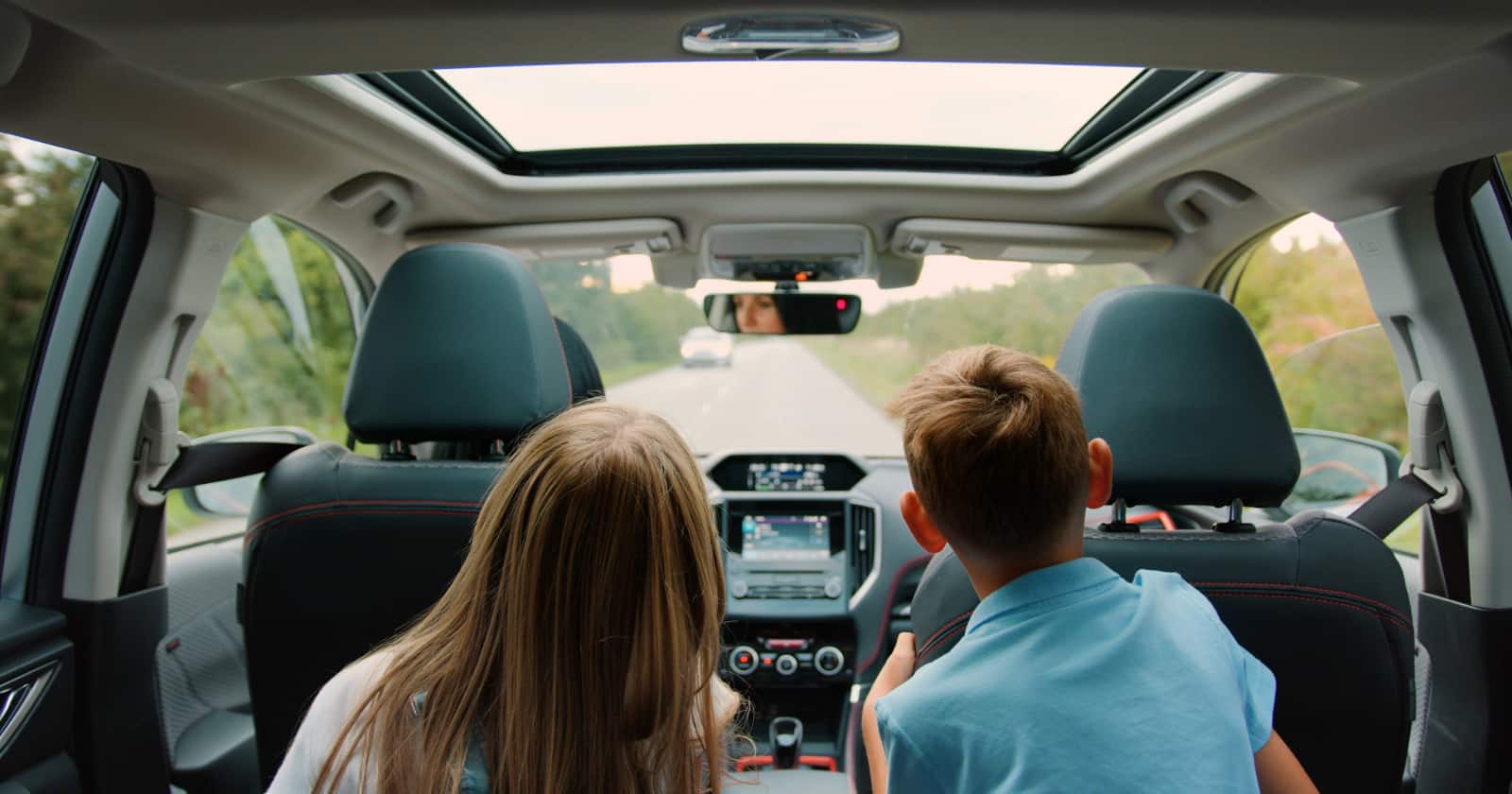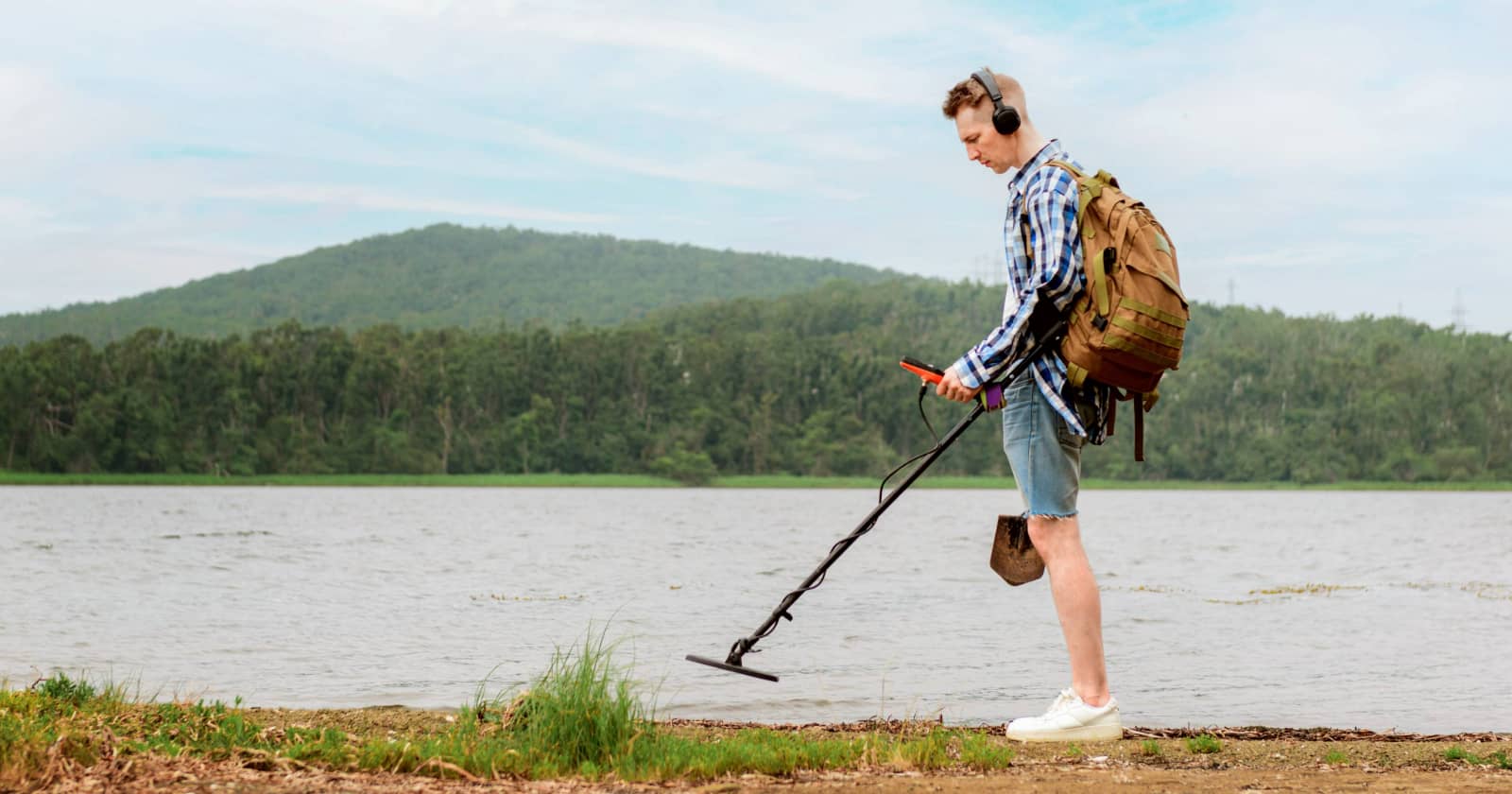Road-tested pets make great travel companions. If you can provide a safe, fun home on wheels there’s no reason why they can’t come along with you any time of the year.
I’ve been full-time RVing with dogs for seven years, and over time have discovered these RV pet travel tips are the secret to enjoying a pet-friendly RV lifestyle with your dog, cat – or both.
Pet RV Travel Tip #1: Know Your Pet’s Personality
As RVers, we understand that an RV can be just as comfortable as a traditional house. For us humans, it’s easy to make the switch from stationary to mobile living.
But dogs and cats can’t adjust as rapidly to a new environment as we can. If your pet hasn’t traveled before, your RV will be a new and scary place for them. Before you take your pet on the road, consider the following.
How does your animal adapt to different environments?
Is your dog happy no matter where she goes, as long a she’s with you? Does your cat do OK when traveling between home and the boarding kennel?
Or does your pet become fearful, timid and nervous the minute the front door of your house opens? Are trips to the vets a reason to break out the doggie downers?
See also: Finding Your Perfect Dog Sitter Has Never Been Easier
Does your crated cat howl, whine and hiss once the car is in motion?
If you have an animal who vocally or physically displays an aversion to new situations, putting them through the ordeal of a road trip may not be in their best interest.
Keep in mind that this behavior can sometimes be un-learned by giving your animal enough time to acclimate.
You’ll need to be extremely patient and gradually introduce your pet to the RV lifestyle.
Help your pet get acquainted with the RV
You can begin this process by placing some of your animal’s belongings in the RV, then calmly bringing the dog or cat inside to let him sniff around and add his scent to the mix.
If your dog is already crate-trained, bring the crate inside as well and encourage your pup to go in (but don’t force it).
Dogs who aren’t yet crate trained may need to be, depending on how well they adapt to the next few steps – I’ll have more about that issue below.
Some pets will show signs of anxiety by drooling, whining or pacing.
If your pet does any of these, don’t reinforce this behavior by paying attention to it or picking up the animal.
Ignore the behavior itself and instead stay with your pet. In a calm, soothing voice explain to your pet that the RV is his home too.
Once your pet is calm enough to be petted, sit with him for a while and slowly stroke his fur.
Feeding treats while doing this is another great way to associate happy memories with the RV.
Return to your normal home after a few minutes and do this every day for longer and longer periods of time – until you sense that your animal is feeling more secure in the new environment.
It may take just a couple of tries or it may take a month.
Allow enough time before traveling and remember that each animal is different in how they adjust.
Familiarize your pet with engine noise
Once you believe your animal is OK being in the new home, you can start introducing him to the concept of being in motion. If at all possible ,do this with a partner so that one person can stay with the animal and the other can be the driver (but you won’t actually be moving the RV just yet).
Make sure some of your pet’s toys are already inside, and then bring the animal into the RV. Allow enough time for your pet to calm down.
Once your pet looks more relaxed, turn on the engine.
Leave it running for at least a couple of minutes so that you can get a sense of how your pet will cope with this vibration. Some pets will be OK with the engine on while others will immediately show nervousness.
If your dog or cat seems fine, reward him with treats, and repeat this process at least a couple more times throughout the week.
If your pet is nervous, cut the engine and keep calm.
Stay with your dog or cat in the RV for a few more minutes to demonstrate that quiet will return.
Don’t try to soothe your pet by picking her up. Instead, ignore the behavior and do something else inside the rig until your pet calms down.
Once she’s back to normal, feed a treat and give some love to reward the desired calm behavior, then return to your home. Repeat this process for a few days until your pet seems comfortable with the engine running.
Introduce the concept of being in motion
Now it’s time to actually move the RV. If you have a motorhome, your pet will be inside with you. For RVers with towables, your pet will be placed inside your tow vehicle.
Proceed by repeating the first two steps we previously described.
- ensure your animal’s belongings are inside and allow him to hang out for a few minutes to relax
- once your pet is calm, turn on the engine and let it idle for a few minutes
Next, you or a driver will actually move the RV, but this time you’ll only be taking a quick trip around the block.
Before turning the key, place your animal in a safe, secure place and take a short drive of a few miles.
As you begin to drive, remember to ignore any anxious behavior. If your animal calms down and is quiet, that is the behavior you want to reward with lots of praise (or treats if you have a passenger along).
Don’t travel very far this time, you’re just aiming to get a sense of how your animal will cope with being in motion.
Just as you did above, do this incrementally until you get a hunch that your pet is OK with vehicle movement.
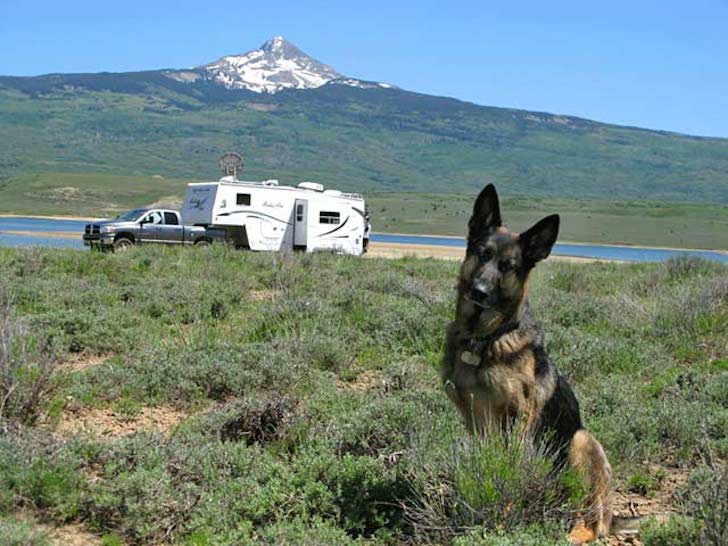
These steps should help your pet adjust to the concept of a home on wheels.
Some will be fine right away, others may need more time to adjust.
A few might seem like hopeless cases that can never go out on the road.
If your pet still feels anxiety while driving, consider some of these remedies below.
Holistic anti-anxiety strategies
A number of over-the-counter holistic remedies can help anxious pets calm down:
- D.A.P. (Dog Appeasing Pheromone) Collar for Medium to Large Dogs – 27.6″
- Thundershirt Dog Anxiety Treatment
- Through a Dog’s Ear: Music to Calm Your Canine Companion, Volume 1
- Thundershirt Calming Cap
- PetNaturals of Vermont’s Calming stress reduction chews
- Rescue Remedy Natural Stress Relief for Pets
Professional help
If a holistic approach doesn’t work, consider meeting with a board-certified animal behaviorist who can provide professional guidance to help your pet adjust to travel.
The American College of Veterinary Behavorists can connect you with a behaviorist who might also suggest a pharmaceutical remedy to help curb your dog’s anxiety, such as Clomicalm or Reconcile, which work in conjunction with behavior modification strategies.
Pet RV Travel Tip #2: Build a Pet Friendly Environment
Animals are curious by nature, and will often get into all sorts of trouble at home. The risk is even greater when they’re placed into a new environment like an RV.
The compact nature of a home on wheels makes it especially easy for our pets to get into everything from floor to ceiling.
Avoid having to take your pet to the ER by following these rules to create a pet-safe RV.
Crate train your pet
Many of us grew up with the impression that crates are cruel cages for pets. Actually, nothing could be further from the truth.
Animals instinctively find comfort in this den-like environment and a crate is the one place in our home that is truly their own spot.
When pets are scared, a crate is a safe haven that will allow them to calm down and ride out whatever fear they’re experiencing. If you encounter any adverse conditions when you’re on the road – from rain storms to unexpected engine breakdowns – a crate is a comforting spot for your pet to hang out until life gets back to normal.
Crate training during the first few months of life is critical for early and ongoing success, but if you missed that opportunity or you adopted a pet who has never been crate-trained, it’s never too late to teach your pet about them.
Amazon has a number of books about crate training that can help you get started.
Remove food temptations
RVs are an amusement park of culinary delights for dogs and cats with counter-surfing tendencies. In my own RV, my chow hound German Shepherd can simply stand next to our dining room table and lean over to grab whatever’s on top of it.
Or, he can stand on the steps leading up to our bedroom and bend down to lick the kitchen counter.
Whenever we are going to step outside the RV, even if it’s only for a minute, we put away every morsel of food that he could get into – even table scraps that fell into the kitchen sink.
If he is going to be crated, we make sure that nothing is left on or next to his wire crate, since he’s somehow always able to magically pull objects in-between the bars.
Nearly every time he’s pulled this stunt, it was because we neglectfully left some food within easy reach.
Use a cat house
Many RVers with cats have installed a cat house observation deck in the basement area of their RVs. This enables their cats to safely venture back and forth between the RV interior and basement.
The basement area has a screen that allows the cats to enjoy fresh air without venturing off into the not-so-cat-friendly outdoors.
This full-time RVing couple is fortunate enough to have a million dollar rig with enough basement space for six cats, but we’ve seen RVers in average travel trailers do the same thing on a smaller scale.
Find a spot to go
If you have an indoor cat who’s used to eliminating in a litter box, you can still incorporate one into your RV. It doesn’t have to stink up the rig either.
Here’s a couple of ways to install a cat box in your RV.
Whether you have a dog or cat, using harnesses, leashes and pet tags is the best way to ensure the safety of your pets when they go outdoors.
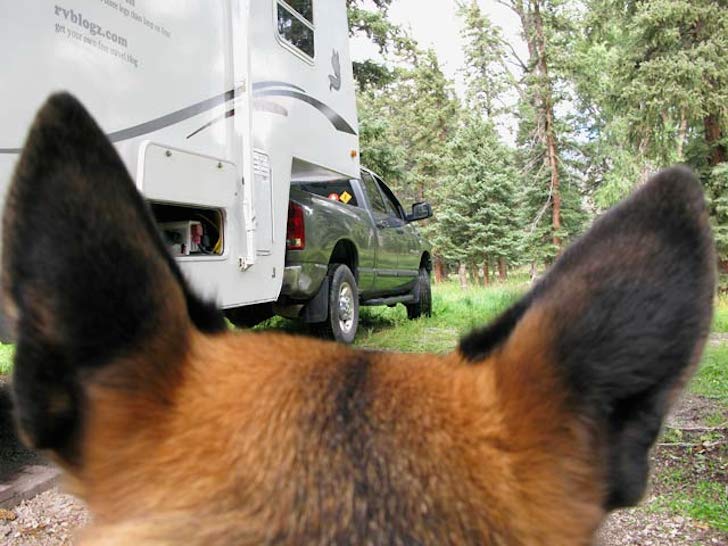
You can keep current pet identification on this QR Coded Pet Tag.
It allows you to program your pet’s identifying information and present location, such as your weekend campsite number, right into the tag.
Anyone who finds your pet can easily read it with a smart phone.
Or try the low-tech barrel tube pet ID tag that features a hollow compartment for storing a tiny note with your pet’s information.
Also consider purchasing a harness for added security. Like this RVing couple discovered, a cat harness allows felines to enjoy outdoor adventures while remaining safely within their human’s reach.
For dogs, a good dog harness is great for helping dogs into and out of the RV and while hiking, running and playing.
The Webmaster also has a D-ring for attaching a leash, which keeps even the best Houdini-dog securely on lead.
Finally, if your dog will be riding in your tow vehicle, use a reputable seatbelt harness for added protection in case you’re in an accident.
Smaller animals like cats should ride in a travel carrier.
Pet RV Travel Tip #3: Keep Your Pet Healthy
Your pet’s health is a top priority when traveling and certain locations can expose your pets to new viruses, diseases and illnesses. If you will be traveling to different parts of the country, talk to your vet about potential health risks for those areas.
For example, if you are a Northerner who will be RVing through the South, you’ll need to be extra vigilant about giving heartworm medication to avoid an infection of this common and troublesome condition.
Many new pet health risks can be avoided with a routine vet visit at least a couple of months before your departure date.
Prepare for Emergencies
Once you’re on the road together, some animals will channel their travel anxieties through their gastrointestinal system. This unpleasant situation leads to extreme bouts of diarrhea (or the opposite effect, an inability to have bowel movements) as well as a decreased appetite.
The best thing you can do is prepare. Assemble a pet health care kit that includes:
- Pet first aid kit
- Edible green clay: a natural compound that helps regulate bowel function and restore stool consistency.
- Goat’s Milk: a tasty meal addition that stimulates finicky appetites with vitamins, minerals and soothing properties for animals with sensitive stomachs and gastrointestinal problems.
- Benadryl: this antihistamine for humans is safe enough for dogs and comes in handy for bee sting recovery, sudden allergy attacks and more. Before giving it to your pet , ask your vet about safety, possible interactions with other pet medications and dosage amount.
- Muzzle: when a pet is injured he will instinctively respond to our help with sudden aggression and even biting. A muzzle is critical for emergency situations.
Medical records
Even if you’re just taking a short RV vacation, it’s important to have your pet’s current medical information on board in case you need to seek emergency veterinary help.
If your pet does need emergency veterinary care, visit the American Animal Hospital Association (AAHA) website to find a nearby veterinary hospital or clinic that is accredited by the American Animal Hospital Association.
AAHA-accredited hospitals must meet stringent vet clinic criteria to belong to this organization.
Pet RV Travel Tip #4: Create Consistency
Like human children, our pets thrive on consistency, whether it’s with feeding, walking or playtime routines. Constant travel can make keeping a schedule tough, but there are a couple of things you can do to help regulate your pet’s behavior.
Establish an arrival routine
When you pull into a campground, set up camp exactly the same way, every single time. Not only will this help you to set up the rig without any mishaps, but it will give your pet a sense of routine that’s comforting.
For example, before you start to hook up your utilities, put out an exercise pen for your dog where she can watch you get your campsite ready. Once set up is complete, praise your dog and play for a bit to show your appreciation for her patience.
When it’s time to leave, allow your dog to watch you break camp from inside the exercise pen you’ve placed outdoors.
Have consistent activities
Dogs especially need a steady rhythm of walks, meals and playtime – but cats enjoy these activities too.
Although it can be tough to remember to do these things when you change environments, if you set daily smart phone reminders and follow through, your pet will feel much more secure in their new way of life.
Pet RV Travel Tip #5: Be a Responsible Pet Parent
The last suggestion I have for RV travel with pets is to remember to be courteous to your RV park and campground neighbors.
Keep your dog on a controlled leash when walking through a campground. Don’t allow your pet to roam and disturb other animals or campers.
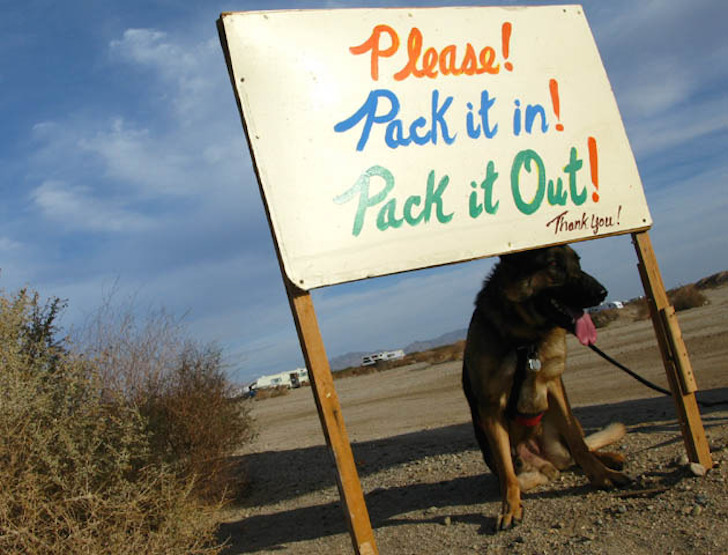
Pick up and properly dispose of pet waste.
Don’t tether your animal up outside unless you are there too. Some campers might be frightened by just the sight of an unattended animal, even if it’s on a leash.
Don’t leave your pet home alone for long periods of time, especially in hot weather (your air conditioning unit could fail). Find a petsitter or board your animal if you won’t return soon.
Conclusion
All pets have personalities and needs as unique as our own. Usually they can adapt to change much better than we believe.
The trick to discovering if your dog or cat can handle RV road trips is giving them plenty of time to adapt to their new home before you hit the road.
Taking slow, measured steps in bringing your pet onboard will go a long way toward creating road trip memories that last a lifetime.

